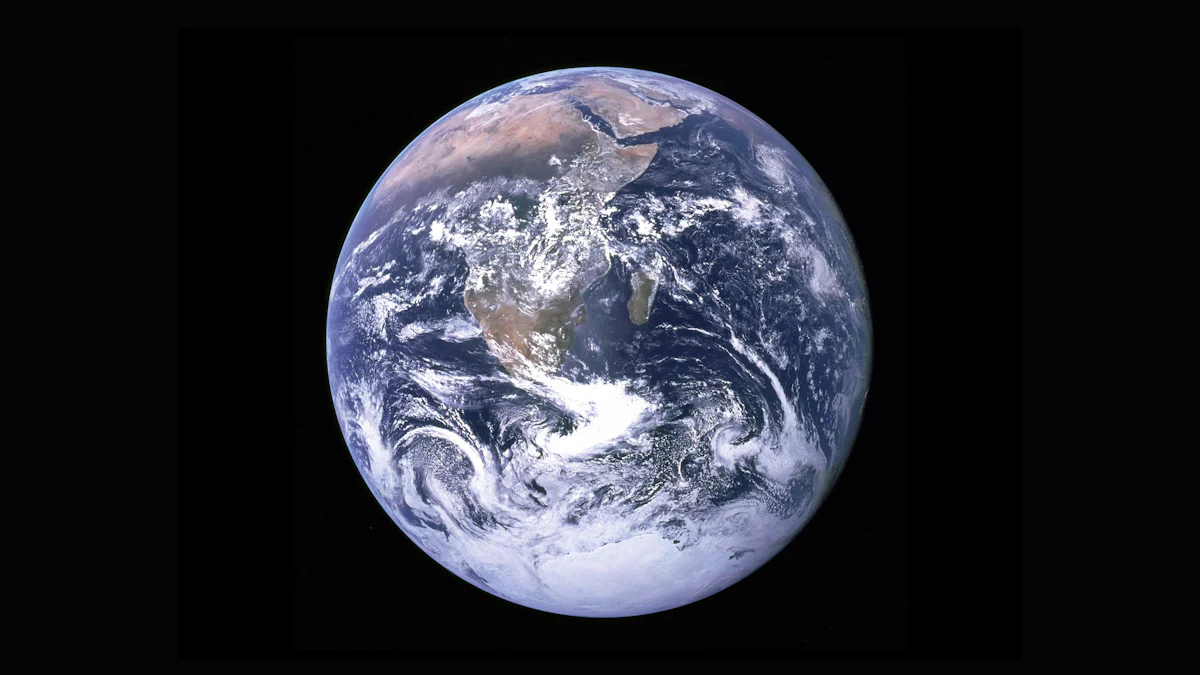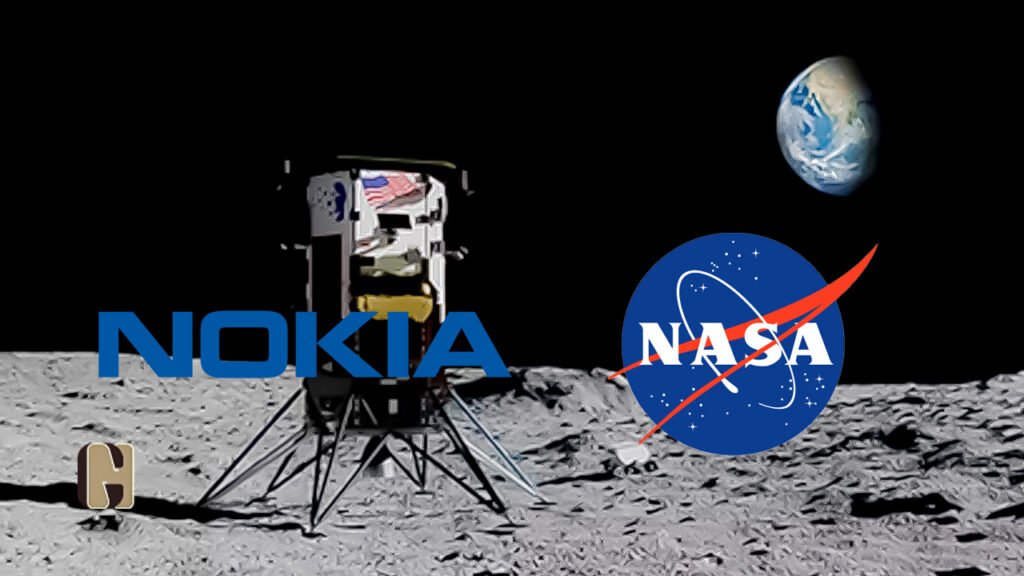News
Aphelion 2024: Earth’s Subtle Changes Explained
The concept of aphelion refers to the point in Earth’s orbit where it is farthest from the Sun. Understanding aphelion is crucial for grasping the subtle changes in Earth’s climate and seasons. The Aphelion Phenomenon 2024 will occur on July 5, with Earth positioned more than 94.5 million miles from the Sun. This event offers a unique opportunity to observe and study the intricate dynamics of Earth’s elliptical orbit. Stay tuned for the latest news on this astronomical event!
Understanding Aphelion

Image Source: pexels
Definition and Significance
What is Aphelion?
Aphelion refers to the point in Earth’s orbit where Earth is farthest from the Sun. The term “aphelion” originates from the Greek words ‘apo’ meaning away, and ‘helios’ meaning Sun. This event occurs due to Earth’s elliptical orbit, which causes varying distances between Earth and the Sun throughout the year. In 2024, aphelion will occur on July 5 at 05:06 UTC, with Earth positioned approximately 94.5 million miles from the Sun.
Why is Aphelion Important?
Understanding aphelion is crucial for comprehending the subtle changes in Earth’s climate and seasons. The distance between Earth and the Sun influences the amount of solar radiation received, impacting global temperatures. During aphelion, Earth receives about 7% less sunlight compared to perihelion, leading to a slight reduction in solar radiation. Although this difference does not cause extreme weather changes, it contributes to the intricate dynamics of Earth’s climate system.
Earth’s Orbit Explained
Elliptical Orbit of Earth
Earth’s orbit around the Sun is not a perfect circle but an ellipse. This elliptical shape results from gravitational influences, primarily from the Moon and other planets. The orbit’s eccentricity, or deviation from a perfect circle, varies over time. These variations affect the distances between Earth and the Sun, leading to events like aphelion and perihelion.
Perihelion vs. Aphelion
Perihelion and aphelion represent two opposite points in Earth’s orbit. Perihelion occurs when Earth is closest to the Sun, while aphelion marks the farthest point. The difference in distance between these two points is approximately 5 million kilometers (or about 3.1 million miles). During perihelion, which occurs around January 4 each year, Earth is about 91.4 million miles from the Sun. In contrast, during aphelion, Earth is about 94.5 million miles away.
Historical Context
Shifting Timing Over Centuries
The timing of aphelion has shifted over centuries due to changes in Earth’s orbital eccentricity. These shifts result from gravitational interactions with other celestial bodies. Historically, the date of aphelion has moved gradually over long periods. Complex calculations involving these gravitational influences determine the exact dates of aphelion and perihelion each year.
Historical Observations and Records
Historical records and observations provide valuable insights into the understanding of aphelion. Ancient astronomers documented the positions of celestial bodies, contributing to the knowledge of Earth’s orbit. These records have helped modern scientists refine calculations and predictions of aphelion and perihelion. The study of historical data continues to enhance the understanding of Earth’s orbital dynamics and its impact on climate and seasons.
Aphelion Phenomenon 2024
Specific Details
Date of Aphelion in 2024
The Aphelion Phenomenon 2024 will occur on July 5. Earth will be at its farthest point from the Sun. This event will take place at 05:06 UTC.
Distance from the Sun
During the Aphelion Phenomenon 2024, Earth will be approximately 94.5 million miles from the Sun. This distance marks the maximum separation between Earth and the Sun in the annual orbit.
Comparison with Previous Years
Changes in Distance
The distance between Earth and the Sun during aphelion varies slightly each year. In 2024, Earth will be about 94.5 million miles away from the Sun. This distance is about 3.1 million miles farther than during perihelion, which occurs in early January. The difference in distance between aphelion and perihelion remains relatively consistent, around 5 million kilometers.
Variations in Timing
The timing of aphelion shifts gradually over centuries. Gravitational interactions with other celestial bodies influence these shifts. In recent years, aphelion has occurred around early July. For instance, in 2023, aphelion took place on July 6. The Aphelion Phenomenon 2024 will occur on July 5, showing a slight variation in timing compared to previous years.
Subtle Changes and Effects

Image Source: pexels
Impact on Earth’s Climate
Temperature Variations
The distance between Earth and the Sun during aphelion causes a reduction in solar radiation. Earth receives about 7% less sunlight compared to perihelion. This reduction leads to a slight decrease in global temperatures. The difference in temperature is approximately five degrees Celsius. This impact, though subtle, contributes to the overall climate dynamics.
Seasonal Changes
The aphelion phenomenon affects the length of seasons. The distance from the Sun influences the duration of each season. During aphelion, the Northern Hemisphere experiences summer. The increased distance from the Sun slightly extends the summer season. This extension results from the slower orbital speed of Earth at aphelion. The Southern Hemisphere, conversely, experiences a slightly shorter winter.
Minimal Effects on Daily Life
Misconceptions about Aphelion
Many misconceptions surround the aphelion phenomenon. Some believe that aphelion causes extreme cold weather. Others think it significantly impacts daily life. However, these beliefs are incorrect. The changes in temperature and season length are minimal. Aphelion does not cause drastic weather changes or health effects.
Scientific Explanations
Scientific explanations clarify the minimal impact of aphelion. The tilt of Earth’s axis has a more significant effect on seasons than the aphelion distance. The axial tilt determines the intensity and distribution of sunlight. The aphelion phenomenon, while interesting, does not drastically alter Earth’s conditions. Understanding these scientific principles helps debunk common myths about aphelion.
Broader Perspective
Long-term Observations
Patterns Over Centuries
Astronomers have studied aphelion for centuries. Historical records show that the timing of aphelion shifts gradually. Gravitational interactions with other celestial bodies cause these shifts. Ancient astronomers documented the positions of celestial bodies. These records provide valuable insights into Earth’s orbital dynamics.
Modern scientists use these historical observations to refine calculations. The study of these patterns helps predict future aphelion dates. Understanding these long-term patterns enhances knowledge of Earth’s orbit. This information contributes to broader research on climate and seasons.
Future Predictions
Future predictions of aphelion rely on complex calculations. Gravitational influences from other planets affect Earth’s orbit. These calculations determine the exact dates of future aphelion events. Scientists use advanced models to predict these dates with precision.
Accurate predictions help plan astronomical observations. These predictions also aid in studying the effects of aphelion on Earth’s climate. Continued research in this area remains crucial. Understanding future aphelion events contributes to broader scientific knowledge.
Encouraging Further Exploration
Resources for Learning More
Numerous resources exist for those interested in aphelion. timeanddate.com offers comprehensive guides on perihelion and aphelion. These guides explain the science behind these phenomena. Detailed calendars of upcoming events provide exact dates and distances.
Educational institutions and observatories also offer valuable information. Online courses and webinars cover topics related to Earth’s orbit. Books and scientific journals provide in-depth analyses. Engaging with these resources enhances understanding of aphelion.
Importance of Continued Observation
Continued observation of aphelion remains essential. Regular monitoring helps track changes in Earth’s orbit. These observations contribute to long-term climate studies. Accurate data collection supports scientific research.
Encouraging public interest in aphelion fosters a deeper appreciation for astronomy. Educational outreach programs can inspire future generations. Promoting awareness of these phenomena highlights their significance. Continued observation and study of aphelion advance scientific knowledge and public understanding.
Understanding aphelion provides valuable insights into Earth’s orbit and climate. The Aphelion Phenomenon 2024 on July 5 highlights the subtle yet fascinating changes in Earth’s distance from the Sun. These changes, while minimal, contribute to the intricate dynamics of our planet’s climate system. For those interested in learning more about such phenomena, visit timeanddate.com for comprehensive guides and resources. Explore the science behind Earth’s journey through space and stay informed about upcoming astronomical events.
FAQ
1. What is the aphelion phenomenon?
The aphelion is the point in Earth’s orbit where it is farthest from the Sun. This occurs once a year, typically in early July. In 2024, the aphelion will occur on July 5th.
2. How far is the Earth from the Sun during the aphelion?
During the aphelion, Earth is approximately 152.1 million kilometers (94.5 million miles) away from the Sun. This is the maximum distance Earth reaches from the Sun in its elliptical orbit.
3. Does the aphelion affect Earth’s climate?
The aphelion has a very subtle effect on Earth’s climate. Although Earth is farther from the Sun, the difference in distance is relatively small and is not enough to cause significant temperature changes. Seasonal variations are primarily driven by the tilt of Earth’s axis, not its distance from the Sun.
4. Why does the aphelion occur in July during the Northern Hemisphere’s summer?
The aphelion coincides with summer in the Northern Hemisphere because Earth’s seasons are determined by the tilt of its axis, not by its distance from the Sun. When the Northern Hemisphere is tilted towards the Sun, it experiences summer, even though Earth is farther from the Sun during the aphelion.
5. How does the aphelion affect daylight hours?
The aphelion has no direct impact on daylight hours. Daylight duration is governed by the Earth’s axial tilt, which affects the angle at which sunlight reaches different parts of the planet. In July, the Northern Hemisphere experiences longer daylight hours, regardless of Earth’s distance from the Sun.
6. Are there any noticeable effects on Earth during the aphelion?
The effects of aphelion on Earth are subtle and generally not noticeable. The slight increase in distance from the Sun can lead to a very minor reduction in the amount of solar energy received by Earth, but this is negligible in terms of day-to-day weather and climate.
7. What is the opposite of aphelion?
The opposite of aphelion is perihelion, which is the point in Earth’s orbit where it is closest to the Sun. Perihelion occurs in early January, when Earth is about 147.1 million kilometers (91.4 million miles) from the Sun.
8. How does the aphelion affect Earth’s orbit?
The aphelion is part of Earth’s elliptical orbit around the Sun, a result of gravitational forces. Earth’s orbit is slightly elliptical, so the distance between Earth and the Sun varies throughout the year, causing the aphelion and perihelion.
9. Will the date of the aphelion change in the future?
The date of the aphelion can shift slightly over time due to gravitational influences from other planets and the gradual changes in Earth’s orbit. However, these changes are gradual and occur over long periods.
10. Does the aphelion have any impact on space missions or satellites?
The aphelion can have a minor impact on space missions and satellite operations that require precise calculations of Earth’s position relative to the Sun. However, these effects are well understood and accounted for in mission planning.
News
Fyre Festival II Tickets Selling for Up to $1.1 Million
Fyre Festival 2 is officially happening, with tickets now on sale, ranging from $1,400 to a staggering $1.1 million. The sequel to the infamous 2017 festival disaster is set to take place on Isla Mujeres, Mexico, and promises an exclusive three-day experience filled with music, art, cuisine, and adventure.
Who’s Behind It?
Billy McFarland, the convicted fraudster behind the original Fyre Festival, is leading the event once again. However, this time, the festival is being managed by Lostnights, a seasoned live event production company. Despite McFarland’s assurances that “Fyre 2 will be a historic experience”, skepticism remains high.
What’s Included in the $1.1M Package?
The highest-tier ticket package, dubbed “Prometheus: God of Fyre”, includes:
- Luxury yacht accommodations
- Exclusive beachside performances
- VIP access to events and excursions
- Private dining experiences
No Lineup Announced Yet
As of now, no official artist lineup has been revealed. However, McFarland has hinted that it will feature electronic, hip-hop, pop, and rock acts.
Is It Worth the Risk?
Many remain skeptical about whether Fyre Festival 2 will actually happen or if it will be another high-profile failure. Tickets are available on the official Fyre Festival website, but given the history of false promises, potential attendees may want to proceed with caution.
News
Nokia Deploys First 4G Network on the Moon
Nokia has made history by deploying the first 4G/LTE cellular network on the Moon. This groundbreaking achievement is part of NASA’s IM-2 mission and was made possible through a partnership with Intuitive Machines, a private space exploration company.
The network, known as the Lunar Surface Communication System (LSCS), was integrated into Intuitive Machines’ Athena lander and successfully launched aboard a Nova-C class lunar lander named Odysseus. This technology will support future exploration by providing high-speed connectivity between lunar vehicles, robotic systems, and Earth.
Why Does the Moon Need 4G?
Nokia’s 4G network is designed to improve connectivity for future crewed and uncrewed missions. The network will:
- Enable real-time communication between landers, rovers, and astronauts.
- Support high-definition video streaming, telemetry data transmission, and command-and-control functions.
- Help with resource mapping, particularly in the Moon’s south pole region, where scientists search for water ice deposits.
How Does It Work?
The LSCS system is housed within Athena’s carbon-composite panels and is built to withstand the harsh conditions of space travel. It connects to two lunar mobility vehicles:
- Micro-Nova Hopper: A mini-lander designed to explore permanently shadowed lunar regions.
- MAPP Rover (Mobile Autonomous Prospecting Platform): A robotic rover developed by Lunar Outpost to traverse the lunar surface and carry out exploration tasks.
Once operational, the rover will deploy from Athena, extend its antennas, and connect to Nokia’s 4G network, ensuring a seamless communication link back to Earth.
Future of Lunar Communications
This project is a key step toward building a permanent lunar infrastructure. Nokia and Intuitive Machines hope to expand this technology to Mars, allowing cellular networks to play a vital role in deep-space exploration.
Steve Altemus, CEO of Intuitive Machines, described the initiative as a “transformative moment in the commercialization of space”, emphasizing its importance in NASA’s Artemis program, which aims to establish a sustainable human presence on the Moon.
This deployment is expected to revolutionize space exploration, paving the way for human settlements, resource extraction, and future Moon-based industries.
News
Instagram May Be Launching a Separate Reels App

Instagram is reportedly exploring the idea of launching a standalone app for Reels, aiming to compete more aggressively with TikTok. This move could separate short-form video content from the main Instagram app, providing a dedicated space for Reels content, similar to how Facebook once separated Messenger from its main app.
Why Instagram Might Do This
A separate Reels app could give Instagram a stronger presence in the short-video market. Many users currently prefer TikTok for its algorithm-driven discovery and engagement.
Having a standalone app may allow Instagram to enhance user experience, making Reels more appealing with features that could rival TikTok.
Currently, Reels can get buried in Instagram’s interface. A dedicated app might provide better reach and discoverability for creators and brands.
Potential Challenges
- User Adoption: Instagram previously launched Threads as a separate messaging app, but it struggled to gain traction. A Reels app might face the same issue.
- Impact on Instagram’s Engagement: If users move to a new app for Reels, this could lower engagement on the main Instagram app.
- Content Strategy for Brands: Businesses and influencers will need to decide whether to focus on Instagram Reels or shift efforts to the new app if it launches.
What This Means for Users and Creators
If Instagram moves forward with a separate Reels app, early adopters could benefit from increased exposure. However, if the app fails to gain popularity, it could follow the fate of other short-lived experiments. For now, Instagram has not officially confirmed the launch, but reports suggest testing may already be underway.
Would you be interested in using a standalone Reels app, or do you prefer having everything within Instagram?
-

 News1 year ago
News1 year agoKolkata Doctor Case: Tragic Story of Dr. Moumita Debnath
-

 Health And Fitness1 year ago
Health And Fitness1 year agoPepsi Zero Sugar vs Diet Pepsi: Which Is Healthier?
-

 Health And Fitness1 year ago
Health And Fitness1 year agoHow to Choose a Rehab for Lasting Recovery
-

 News1 year ago
News1 year agoLondon King Opens Up About Her Relationship with Rob Schneider
-

 Tech Innovation1 year ago
Tech Innovation1 year agoTop Machine Learning and Deep Learning Trends for 2024
-

 Tech Innovation1 year ago
Tech Innovation1 year agoHuawei Mate XT: A Detailed Review of the World’s First Tri-Fold Smartphone
-

 Health And Fitness1 year ago
Health And Fitness1 year agoCoca-Cola Zero Sugar vs Diet Coke: Which One to Choose In 2025?
-

 News11 months ago
News11 months agoTyra Banks Biography: Age, Husband, Net Worth



